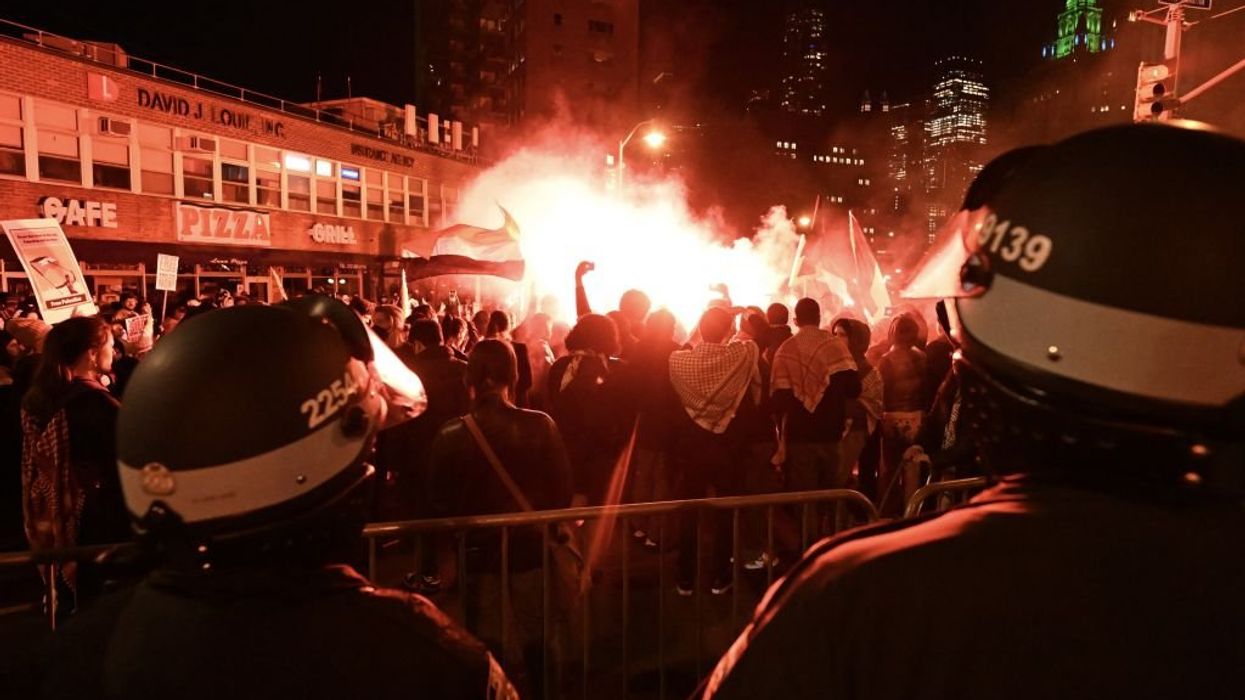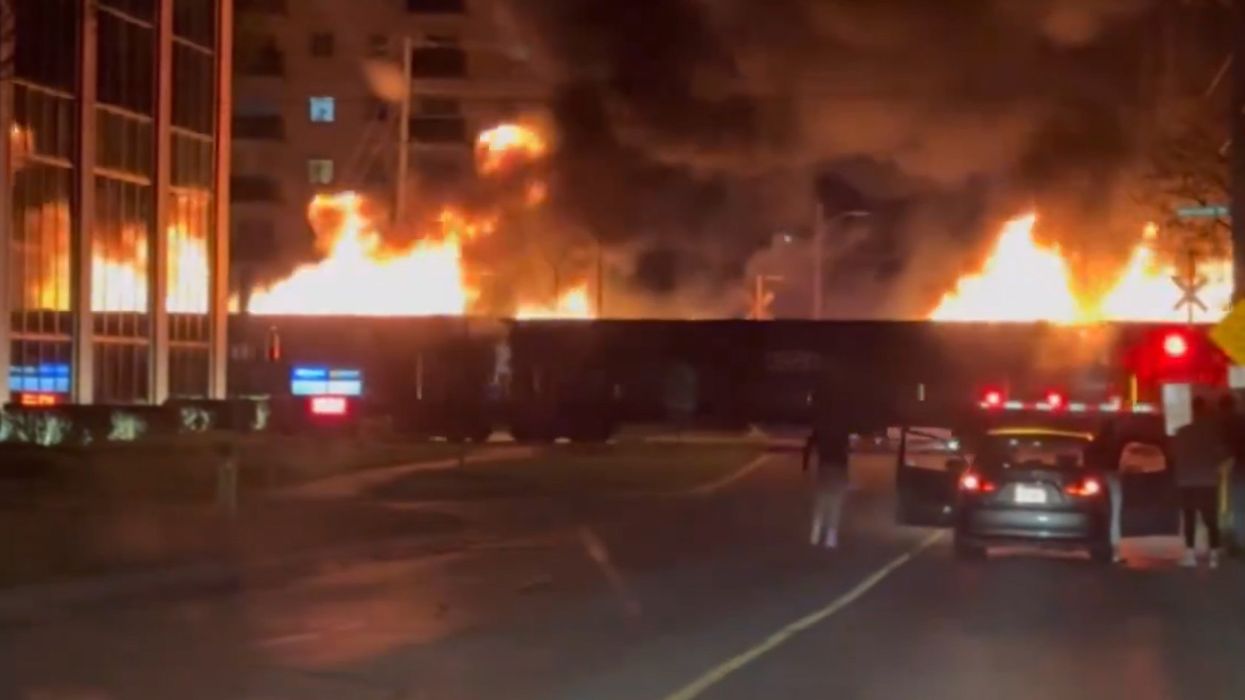Israeli Prime Minister Benjamin Netanyahu and Palestinian Authority President Mahmoud Abbas presented strikingly different accounts of Israel’s recent operation in Gaza at this year’s United Nations General Assembly.
This operation should have come as no surprise. They have recurred every several years because Israel, which has the military capability to destroy Hamas, chooses not to do so. As Hamas deploys and launches its military infrastructure in civilian areas - apartment buildings, mosques, schools, hospitals - destroying Hamas would cause many thousands of civilian deaths. Hence, Hamas is left to periodically increase its rocket attacks from Gaza, generating Israel’s response, inevitably leading to civilian deaths and the expected international condemnation of Israel.
Israel’s 2014 operation started after Hamas kidnapped three Israeli teenagers in June. Israel then arrested many Hamas operatives in the West Bank, dismantling part of Hamas’s West Bank organization. In return Hamas significantly increased its rocket launching from Gaza to which Israel responded, leading to Israel’s most recent operation
 A Palestinian looks at workers (unseen) collecting the rubble of the houses and buildings that were destroyed during the devastating 50-day war between Israel and Hamas on October 7, 2014, in Gaza City. An international donors' conference chaired by Egypt and Norway on reconstructing the enclave will be held in Cairo on October 12, 2014 during which the Palestinian government is to ask for $4 billion to rebuild the Gaza Strip's battered infrastructure. AFP PHOTO / MOHAMMED ABED
A Palestinian looks at workers (unseen) collecting the rubble of the houses and buildings that were destroyed during the devastating 50-day war between Israel and Hamas on October 7, 2014, in Gaza City. An international donors' conference chaired by Egypt and Norway on reconstructing the enclave will be held in Cairo on October 12, 2014 during which the Palestinian government is to ask for $4 billion to rebuild the Gaza Strip's battered infrastructure. AFP PHOTO / MOHAMMED ABED
Hamas engineered the inevitable civilian deaths in Gaza from Israel’s response. International law recognizes that civilians in combat zones may be killed: “It is clear that launching an attack knowing that civilian casualties are likely to occur does not in itself necessarily amount to an indiscriminate attack, because incidental injury or damage is not as such prohibited.” Rather, international law requires that a party to an armed conflict refrain from attacks where the resulting loss of civilian life “would be excessive in relation to the concrete and direct military advantage anticipated.” International law (ICRC Rule 97. Human Shields) prohibits the use of civilians as human shields, Hamas's routine method of operation.
Hamas took a very serious blow in this last operation. Israel hit about 6,000 Hamas targets in Gaza, destroyed about 3,000 or one-third of Hamas’s rockets, about 1,500 rocket construction facilities, various command and control, and logistics facilities (here and here), and eliminated significant Hamas operational decision-makers (here, here, and here). Israeli news reported after about three weeks of fighting that Hamas had begun to ration its rocket launching because of the number of rockets and rocket construction facilities destroyed. It took Israel several weeks to destroy the tunnels that Hamas had been building over the past five years indicating Israel was monitoring their construction. Hamas’s 6,000 targets in Gaza indicate the extent of Hamas’s deployment of its military infrastructure in civilian areas and Israel’s intelligence and operational capabilities to identify and destroy them.
Analyzing the results of Israel’s response to Hamas launching approximately 4,500 rockets towards Israel should take into account the implications had Israel and other countries not intercepted Iranian arms shipments to Gaza.
In approximate numbers, Israel hit 6,000 targets in Gaza resulting in 1,000 civilian deaths. Statistically this equates to one civilian killed per six targets hit or 86 percent of the targets hit resulting in no civilian deaths, perhaps the lowest ratio in contemporary military history.
Colonel Richard Kemp, former commander of British forces in Afghanistan, stated at the UN Human Rights Council after Israel’s 2009 Gaza operation that the IDF “did more to safeguard the rights of civilians in a combat zone than any other army in the history of warfare.”
The number of Israeli lives saved by the Iron Dome intercepting about 500 Hamas rockets in unknowable. Israel civil defense requires buildings to have bomb shelters; ninety seconds is adequate time for those in Tel Aviv to get to bomb shelter once sirens are heard but an unacceptable way to live. The fifteen second window in areas closest to the border with Gaza is intolerable.
As the UN Human Rights Council established the Goldstone commission after Israel’s 2009 operation in Gaza, so did it establish the Schabas commission on July 23, 2014. Of the Human Rights Council’s ten agenda items, one, Item 7, is devoted to Israel, the only country single-out for scrutiny. Consistent with this, the resolution establishing the Schabas commission to investigate possible violations of international law “deplored” and “condemned” Israel for having done so.
Member states of the UN, comprising the international community would act no differently if confronted by the threat that Israel confronts. As embodied by the UN Human Rights Council, the international community’s response demands reconsideration.
Richard Horowitz is an attorney and former IDF officer. He has lectured on terrorism and related topics in eighteen countries.
–
TheBlaze contributor channel supports an open discourse on a range of views. The opinions expressed in this channel are solely those of each individual author.


 A Palestinian looks at workers (unseen) collecting the rubble of the houses and buildings that were destroyed during the devastating 50-day war between Israel and Hamas on October 7, 2014, in Gaza City. An international donors' conference chaired by Egypt and Norway on reconstructing the enclave will be held in Cairo on October 12, 2014 during which the Palestinian government is to ask for $4 billion to rebuild the Gaza Strip's battered infrastructure. AFP PHOTO / MOHAMMED ABED
A Palestinian looks at workers (unseen) collecting the rubble of the houses and buildings that were destroyed during the devastating 50-day war between Israel and Hamas on October 7, 2014, in Gaza City. An international donors' conference chaired by Egypt and Norway on reconstructing the enclave will be held in Cairo on October 12, 2014 during which the Palestinian government is to ask for $4 billion to rebuild the Gaza Strip's battered infrastructure. AFP PHOTO / MOHAMMED ABED


